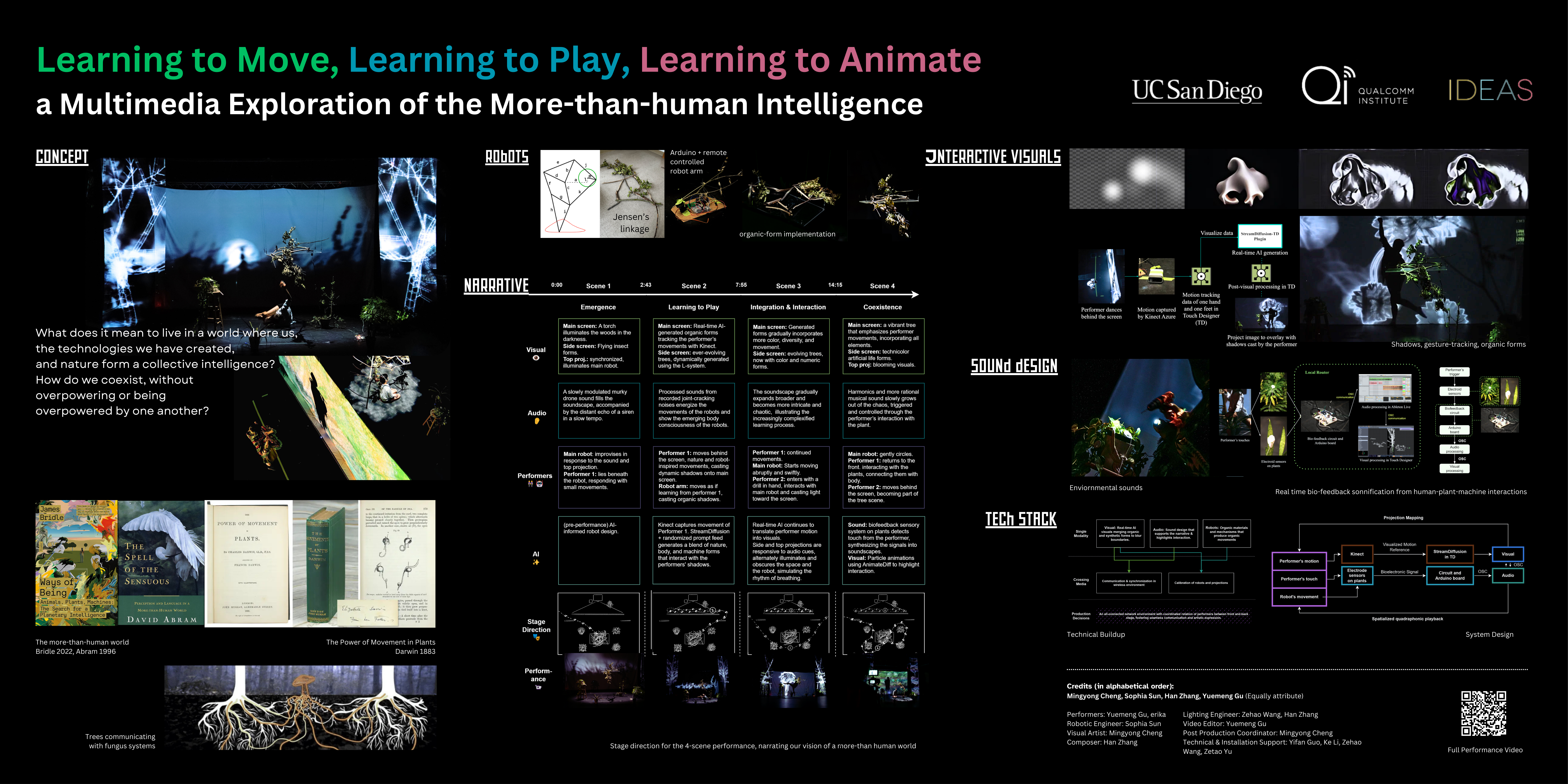Learning to Move, Learning to Play, Learning to Animate

This is a project funded by UCSD’s Qualcomm institude IDEAS program and is a collaboration with many folks here. See full list of contributors below.
Trailer
What does it mean to be intelligent? Is it unique to humans, or can it take other forms—beings of wood, stone, metal, and silicon? Recently, we have seen rapid advances in “artificial intelligence,” but its definition has remained elusive. AI systems are often portrayed as some “other,” an alien invention that threatens to overpower us.
At the same time, we are only just becoming aware of the other intelligences surrounding us on this earth, those we’ve failed to recognize or acknowledge for so long. These beings—animals, plants, and natural systems that have been with us all along—are slowly revealing their complexity, agency, and knowledge.
Ecologist and philosopher David Abram coined the phrase “the more-than-human world” to refer to a way of thinking that seeks to override our human tendency to separate ourselves from the natural world. Our work is the artists’ reflection on learning to see technology and nature as part of this more-than-human world. What does it mean to live in a world where we, the technologies we have created, and nature form a collective intelligence? How do we coexist without overpowering or being overpowered by one another?
We explore these concepts in our performance through mediums and cutting-edge technologies including self-developed organic material robotics, AI-generated visuals, audio spatialization, real-time bio-feedback data sonification and visualization, and movement. Our performers, machines, and visuals interact in the realm of shadows, whose conceptual framework be traced back to Plato’s allegory of the cave, where shadows on the wall represent the limited and often deceptive nature of human perception. Beginning with mutual imitation and later progressing to playfulness, our performance reflects the complex process of how humans, nature, and machines perceive and learn from one another, reflecting the connected consciousness of our environment, our technologies, and us.
Organic form Robots
 Large center robot, Jensen’s linkage.
Large center robot, Jensen’s linkage.
 Arduino IoT controlled organic robot arm, and the shadow it casts.
Arduino IoT controlled organic robot arm, and the shadow it casts.
Full docummentation:
Credits
(in alphabetical order):
Co-Directors: Mingyong Cheng, Sophia Sun, Han Zhang
Performers: Yuemeng Gu, Erika Roos
Robotic Engineer: Sophia Sun
Visual Artist: Mingyong Cheng
Sound Designer: Han Zhang
Lighting Engineer: Zehao Wang, Han Zhang
Video Editor: Yuemeng Gu
Post Production Coordinator: Mingyong Cheng
Technical & Installation Support: Yifan Guo, Ke Li, Zehao Wang, Zetao Yu
Special thanks to Palka Puri for plant support, the Initiative for Digital Exploration of Arts and Sciences (IDEAS) program at the University of California San Diego and Qualcomm Institute for sponsoring this project, and the AV team from the California Institute for Telecommunications and Information Technology (Calit2) for installation and media support.
 Poster at Neurips 2024.
Poster at Neurips 2024.







